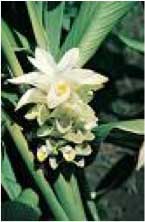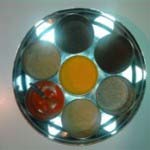Science, patent law, and language
Many traditional forms of knowledge, such as South Asian classical systems of medicine like Ayurveda, are increasingly targeted as prime sources of market value that can be effectively captured and managed through the assertion of intellectual property (IP) rights. This expanding reach of IP has sparked heated debates marked by a deep concern that the very foundations of creativity, culture, and even humanity are increasingly subject to privatization. The case of turmeric, a plant-based powder commonly used throughout South Asia both as a spice in everyday cooking and in Ayurvedic remedies, provides a key illustration of the transformative forces at work when intangible cultural heritage enters into and circulates through the global marketplace for complementary medicine (expected to reach $115 billion per year by 2015). Legal challenges to patenting turmeric’s healing properties elucidate processes of privatization at the intersection of IP rights, medicine, and intercultural knowledge production.
Currently, the Indian central government claims stewardship rights over South Asian classical systems of medicine as national-cultural resources, a relationship realized through several uncoordinated governmental agencies and programs. These state entities spend significant resources in order to prevent the exploitation of this intangible cultural heritage – with most efforts prior to 2001 consisting of expensive ad hoc challenges to individual private patent claims in jurisdictions outside of India. One of the earliest successful challenges of this sort relates to the reexamination and revocation of a patent claim for turmeric’s wound healing properties. This patent revocation is widely cited as the first successful action to reverse bio-pirating activities and has had significant impacts on cultural heritage law and policy.
Turmeric is a flowering plant with a rhizomatic root structure indigenous to south and southeast Asia. The root is typically ground into a powder and used both as a cooking spice and to prevent inflammation and infection. In 1995 the University of Mississippi received a patent with the US Patent and Trademark Office (USPTO) for the wound healing properties of turmeric based upon the research of two Indian-born faculty, Dr. Suman Das and Dr. Hari Har Cohly. In an interview, Das admitted he knew of the traditional uses for turmeric in India and had decided to test the efficacy using biomedical metrics. Das is quoted as saying, “we felt that the compound should be popularized and the only way to do that in [the USA] is by developing it and you cannot do that without a patent.”

Turmeric flowers (CC license)
Knowledge of the turmeric patent soon reached influential figures in the India central government, sparking outrage that such a claim to South Asian traditional heritage was possible. This confusion prompted the Indian Council for Scientific and Industrial Research to file an ex parte request with the USPTO for a reexamination of the patent. In such an action an outside party asks the USPTO to reassess the validity of the patent claim and can introduce evidence that the patent was improperly given. However, from this point forward the reexamination process involves only the USPTO and the patent grantee with the requesting party merely acting as a spectator to the proceedings. In other words, in the case of the turmeric patent reexamination, the Indian government, as represented by its lawyers, were merely spectators to the legal proceedings.

Spice box with turmeric
This is not to say that the Indian state representatives were wholly without agency in the reexamination matter. First, several activists and media outlets decried the continued biopiracy of the developing world by countries such as the US. Second, the Indian state’s lawyers conducted a prior art search of South Asian texts to demonstrate that the wound healing uses for turmeric had been well documented in South Asian language texts prior to the approval of the patent application. In order to make these documents accessible to USPTO patent examiners the Indian state’s lawyers spent the majority of the challenge costs in obtaining certified English translations of thirty-two instances of prior art. These translations, along with copies of the original texts, were submitted to the USPTO as legal evidence accompanying the Indian government’s reexamination request. Finally, the outrage provoked by the turmeric patent and the media attention it drew caused the USPTO to take the reexamination process seriously. In order to show sensitivity to this politics of cultural piracy, a new patent examiner of South Asian descent was assigned to the reexamination proceedings.
Though the turmeric patent was eventually revoked in 1997, the process as defined by law did not allow for the full participation of the Indian state or its legal representatives. As an ex parte entity the Indian state could simply request that the reexamination take place. It was only through extra-judicial and extra-legal avenues — such as international relationships, media scrutiny, and outspoken activists — that the USPTO was convinced to facilitate serious reexamination. Unfortunately, not every heritage community can hope to replicate this type of pressure on the USPTO or afford the high costs of such challenges, a situation noted by several Indian government officials involved in the turmeric patent challenges. As one said:
The turmeric patent challenges ended and we wanted to know, what is the key problem? It is clear that Indian traditional knowledge is well documented, but in languages like Persian and Sanskrit and these books are not accessible to patent examiners in these international offices. And even if they were accessible, then they would not have been able to understand them. So the prior art exists, but only the knowledge of this prior art was not available.
In order to address this issue, a novel documentary project, the Traditional Knowledge Digital Library (TKDL), was initiated in 2001. As a “proprietary database of the Government of India,” the TKDL documents and translates, both linguistically and scientifically, South Asian classical medical knowledge. Furthermore, the digital archive is intended to provide proof of prior art and prevent the successful filing of claims based on South Asian cultural heritage. While the use of the TKDL presently appears limited, there is increasing evidence that it is referenced by examiners in the review of patent claims.

1 Trackback